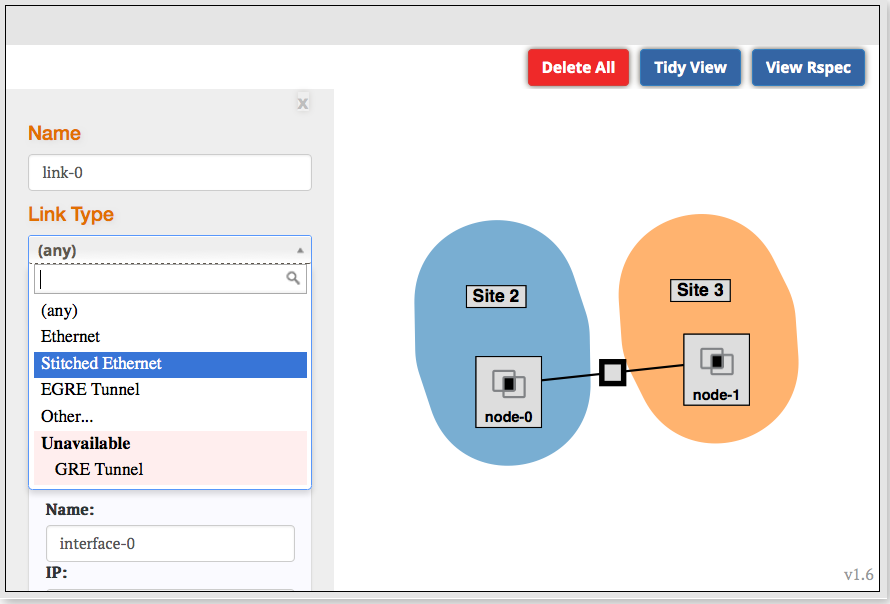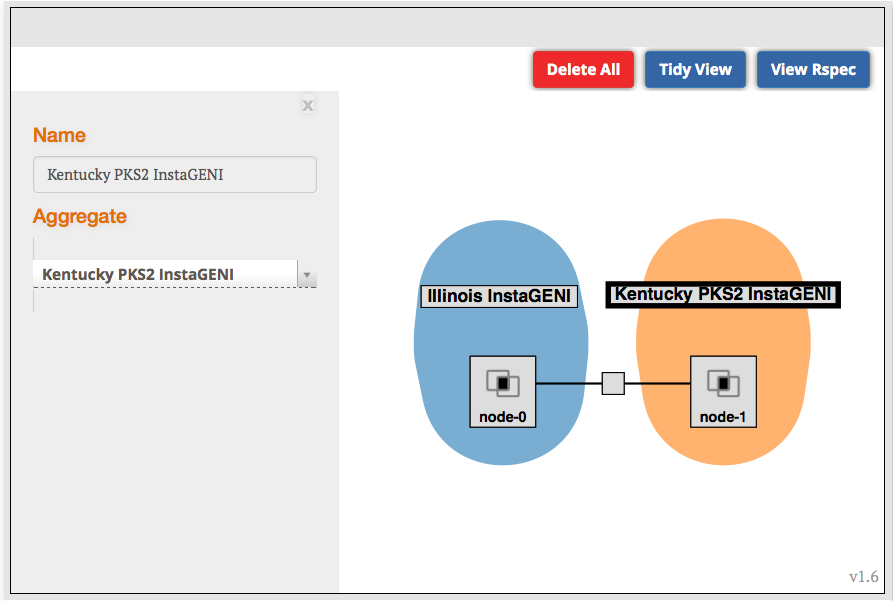| Version 3 (modified by , 9 years ago) (diff) |
|---|
Module C: Learning Switch with Extend topology

1. Design the Experiment
|
2. Establish the Environment
3. Obtain Resources
3.1 Create a slice
Create a slice using omni and the slice name of your choice. From now on that slice name will be referred to as SLICENAME.
$ omni createslice SLICENAME
3.2. Load a simple topology in Jacks
For this exercise, we will edit an existing RSpec file. Start by loading this predefined topology into Jacks.
|

Figure 3-1 Import an RSpec into Jacks. |
|
2. Setup the Topology:
|

Figure 1 Set the Link Type on the inter-aggregate link. |

|
The link type you select will affect the aggregates you are allowed to bind to in the next step.
|
|

Figure 2 Bind the sites. The aggregate choices will be limited based on the link type. |
3.5. Reserve the Topology using the Portal
|

Figure 2 Bind the sites. The aggregate choices will be limited based on the link type. |
|

Figure 3 The geographical location of your nodes. |
|

Figure 4 The stitched topology is ready and green. |
Your resource reservation is complete!
